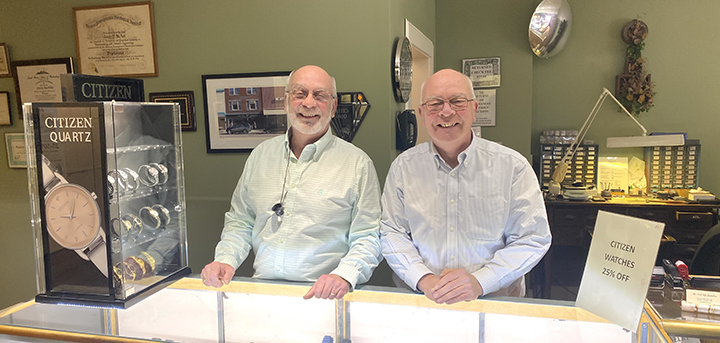What Is It Like To Own An Electric Vehicle?
Published:
April 25th, 2022
By:
Sarah Genter
 Some of the electric and hybrid vehicles on display during the Rogers EV Show and Earth Fair on Friday, April 22. Around a dozen vehicles were on display, including Teslas, Chevy Bolts, Mustangs, Kias, and a Toyota Rav 4. Owners of the cars spoke with attendees about what they're like to own, and offered test rides. (Photo by Sarah Genter)
Some of the electric and hybrid vehicles on display during the Rogers EV Show and Earth Fair on Friday, April 22. Around a dozen vehicles were on display, including Teslas, Chevy Bolts, Mustangs, Kias, and a Toyota Rav 4. Owners of the cars spoke with attendees about what they're like to own, and offered test rides. (Photo by Sarah Genter)
CHENANGO COUNTY — On Friday, April 22 I attended the Rogers Electric Vehicle (EV) Show and Earth Fair at the Rogers Environmental Education Center. As part of the EV Show, around 12 electric and hybrid vehicle owners parked their cars at the center to provide information and offer test rides. I had the opportunity to speak with a few Tesla owners and learn what it's really like to own an electric vehicle in upstate New York.
The big draw for EVs is that they use electricity to run rather than gas, making them a more eco-friendly driving option. Teslas in particular are powered by 4,416 batteries loaded into a pack that sits underneath the car, according to Tesla Model 3 owner Robert Falbo.
Options for charging an EV include plugging it in at home, or using public charging stations. Tesla Model 3 owner Randy Warner explained that he plugs his car in every night at home, and wakes up to a full charge in the morning. But if he's out on the road and needs a boost, he utilizes public chargers instead.
"The one at Oxford, that library, it took me four and a half hours to charge it. But the Tesla Superchargers, depending on how low your battery is and how high you want to go, 15 or 30 minutes, or a little more than that. So quite a difference," he said.
Even better, there are several apps out there for EV owners that show charging stations across the country. According to Plugshare, a popular app among EV owners, Chenango County charging stations include the Oxford Library, the Sherburne News, and the Afton Country Store.
"You check on your app, like Charge Point or Plugshare, or any of these apps, and you can see if someone is parked at the station already charging, or how long they’ll be, the average," explained Rogers Director of Development Heather Tehan. "You can see if it’s working or not, because sometimes they’re not working. And you can see what the fee is going to be, and sometimes they’re free."
In the wake of last week's winter storm that left over 18,000 Chenango County residents without power, I had to ask what EV owners did to keep their cars running. Warner said even without access to chargers, most EVs can handle a few days without being plugged in, and downhill driving can even add miles onto the car.
"A lot of these are like 300 [miles] or more on a charge, a full charge. So you can go quite a ways. Days and days," said Warner. "When you’re going down a hill, like on your truck or a regular vehicle, you’ve got to put the brake on. With this, the motor regenerates that energy as you’re going down. It puts energy back into the battery."
Another bonus to electric vehicles are the savings. Whether charging at home or at a station, EVs cost much less to run than gas powered vehicles.
"The biggest plus, to me, is just not having to go to the gas station. I dislike going to the gas station," said Warner. "And now it’s, what, 50, 60, 70 dollars to fill, and I can take this home and fill it for five, six, seven dollars."
Falbo even provided informational pamphlets breaking down the cost comparison between electric and gas powered vehicles.
"A normal car will cost you about $17 to go 100 miles, where the electric is only 4.50 [dollars]," he said. "It cost me maybe less than a dollar to get down here, and I’m in Rome. That’s about 45 miles, maybe more."
In addition to the cost savings and extra-long mileage, one EV owner said an unexpected benefit was how quickly they heat up. During the harsh New York winters, only needing a couple minutes to warm your car instead of 15 can make a huge difference.
During the EV Show, I also had the opportunity to take a ride in a Tesla. Not only are the seats incredibly comfortable, but the driving is so smooth I felt like the car wasn't driving over the road, but hovering. While all EV and hybrid models can be expected to drive slightly differently, I found that the Tesla was fairly similar to riding in a Prius.
When buying a car, how it drives can be a big factor to consider. Tehan said this is one of the problems with shopping for an electric vehicle, as many dealers don't have models available to test drive.
"There aren’t a lot of models in parking lots at car dealers, because a lot of the EVs are purchased specifically for you. Like if you were to order a Tesla, especially a Tesla, you order it online and it gets delivered to you. It’s not going to be sitting somewhere for you to look at," she said. "Even the Toyota Rav 4 Primes that are hybrids, it’s very hard to see one on a dealer website or talk to a dealer about it."
The sticker price can also come as a shock, with EVs and hybrid prices ranging from $30,000 to $130,000. But, Warner said he thinks the savings help to offset the higher cost.
"I think they’re starting to equalize with the gas. I would think anyways," he said. "At the end of the day, is it going to be any cheaper? Probably not. If it’s a higher cost for the vehicle, probably it’ll equal out in time."
All in all, though, there seems to be a consensus among EV and hybrid vehicle owners: there are no true cons, and they recommend them to everyone.
"The pluses, I don’t have to go to the gas station, that’s a plus. A big plus in my book. But no, I don’t see any cons," said Warner. "I would recommend any electric vehicle, any manufacturer."
"I would never go back to regular cars," said Falbo. "The only thing I’ve really had to do to this is add windshield washer fluid, in three years."
"Electric cars are the future," said Tesla owner Rick Weeks. "And they're here."
Author: Sarah Genter - More From This Author
Comments









